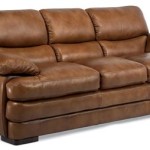White Faux Leather Sofa Cleaner: A Comprehensive Guide
White faux leather sofas offer a stylish and contemporary aesthetic to any living space. Their bright, clean appearance can elevate the ambiance of a room. However, maintaining the pristine condition of white faux leather requires diligent cleaning and the appropriate cleaning products. This article provides a comprehensive guide to effectively cleaning white faux leather sofas, addressing common stains and preventative measures to prolong their lifespan.
Understanding Faux Leather
Faux leather, also known as pleather or vegan leather, is a synthetic material designed to mimic the look and feel of genuine leather. It is typically composed of a fabric base, often made of polyester or cotton, coated with a layer of polyurethane (PU) or polyvinyl chloride (PVC). This coating provides a leather-like texture and appearance. Unlike genuine leather, faux leather is more resistant to water and staining, making it a popular choice for furniture, especially in high-traffic areas. However, faux leather is still susceptible to damage from harsh chemicals, abrasive cleaners, and prolonged exposure to sunlight. Understanding the composition of faux leather is crucial for selecting appropriate cleaning methods.
The key benefit of faux leather lies in its durability and resistance to wear and tear. It is less prone to cracking or fading than real leather, although it can still be damaged or discolored if not properly cared for. Furthermore, faux leather is significantly more affordable than genuine leather, making it an attractive option for budget-conscious consumers. Its ease of cleaning and maintenance further contributes to its appeal.
Different types of faux leather vary slightly in their composition and properties. PU leather tends to be more breathable and have a softer feel, closely resembling real leather. PVC leather, on the other hand, is more durable and water-resistant but can feel less supple. It is important to identify the specific type of faux leather used in the sofa to choose the most suitable cleaning solution and method.
Identifying Common Stains on White Faux Leather Sofas
White faux leather sofas are particularly vulnerable to visible staining. Common culprits include spills from food and drinks, ink marks from pens, dye transfer from clothing, and buildup of dirt and grime. Prompt identification and treatment of stains are essential to prevent permanent discoloration.
Food and beverage spills, such as coffee, wine, and juice, can leave noticeable stains if not immediately addressed. These spills should be blotted up with a clean, absorbent cloth as soon as they occur. Rubbing the spill can spread the stain and make it more difficult to remove. For persistent stains, a mild cleaning solution may be required.
Ink marks from pens or markers can be particularly challenging to remove from white faux leather. The ink can penetrate the surface, leaving a permanent stain. Specialized ink removers or rubbing alcohol may be necessary to treat these types of stains. However, it's crucial to test any cleaning solution on an inconspicuous area first to ensure it doesn't damage the faux leather.
Dye transfer from clothing, particularly dark-colored jeans or dyed fabrics, is another common issue. Over time, the dye can transfer onto the white faux leather surface, causing discoloration. Regular cleaning and preventative measures, such as using protective throws, can help minimize dye transfer.
Accumulation of dirt and grime from everyday use can also dull the appearance of white faux leather sofas. Regular dusting and wiping with a damp cloth are essential to prevent the buildup of dirt and grime. For heavily soiled areas, a mild cleaning solution may be needed.
Recommended Cleaning Methods for White Faux Leather
Selecting the appropriate cleaning method is crucial for effectively cleaning white faux leather without causing damage. The following methods offer a range of options, from gentle everyday cleaning to stain removal techniques.
Regular Dusting and Wiping: The simplest and most effective way to maintain the cleanliness of a white faux leather sofa is to dust it regularly with a soft cloth or microfiber duster. This helps remove loose dirt, dust, and debris that can accumulate on the surface. Follow the dusting with a gentle wipe down using a damp, soft cloth. Avoid using excessive water, as this can damage the faux leather over time. The cloth should be only slightly damp, not dripping wet. This regular maintenance will prevent dirt from embedding itself into the material and causing discoloration.
Mild Soap and Water Solution: For more thorough cleaning, a mild soap and water solution can be used. Mix a small amount of mild dish soap with lukewarm water. Ensure the soap is gentle and doesn't contain harsh chemicals or abrasives. Dip a soft cloth into the solution, wring out the excess water, and gently wipe the faux leather surface. Avoid scrubbing vigorously, as this can damage the material. After wiping with the soapy solution, rinse the area with a clean, damp cloth to remove any soap residue. Dry the surface with a soft, dry towel.
Rubbing Alcohol for Stubborn Stains: For ink stains or other difficult-to-remove marks, rubbing alcohol can be used. However, it's crucial to test the rubbing alcohol on an inconspicuous area first to ensure it doesn't discolor or damage the faux leather. If it's safe to use, dampen a cotton ball with rubbing alcohol and gently dab the stain. Avoid rubbing, as this can spread the stain. Blot the area with a clean cloth to remove the alcohol and stain. Repeat the process if necessary. After removing the stain, wipe the area with a damp cloth to remove any alcohol residue and dry with a soft towel.
Commercial Faux Leather Cleaners: Several commercial faux leather cleaners are available on the market. These cleaners are specifically formulated for cleaning and protecting faux leather surfaces. When selecting a commercial cleaner, choose one that is designed for white faux leather and avoid products that contain harsh chemicals, bleach, or abrasives. Always follow the manufacturer's instructions carefully when using these products. Test the cleaner on an inconspicuous area before applying it to the entire sofa.
Baking Soda Paste for Odors: Baking soda is an effective odor absorber and can be used to remove unpleasant smells from a white faux leather sofa. Create a paste by mixing baking soda with a small amount of water. Apply the paste to the affected area and let it sit for several hours or overnight. The baking soda will absorb the odor. After the allotted time, vacuum the area with a soft brush attachment to remove the baking soda residue. Wipe the surface with a damp cloth to remove any remaining residue and dry with a soft towel.
Preventative Measures to Protect White Faux Leather Sofas
Prevention is key to maintaining the pristine condition of a white faux leather sofa. Implementing preventative measures can significantly reduce the likelihood of staining and damage, prolonging the lifespan of the furniture.
Use Protective Throws and Covers: Employing protective throws and covers is a simple and effective way to shield the sofa from spills, stains, and general wear and tear. These coverings can be easily removed and washed, protecting the faux leather underneath. Choose throws and covers made from soft, non-abrasive materials to prevent scratching or damaging the surface. Opt for light-colored fabrics to avoid dye transfer onto the white faux leather.
Avoid Direct Sunlight: Prolonged exposure to direct sunlight can cause faux leather to fade and crack. Position the sofa away from direct sunlight or use curtains or blinds to filter the light. Regular rotation of cushions can also help prevent uneven fading. Consider using UV-protective window film to further reduce the impact of sunlight on the sofa.
Promptly Clean Spills and Stains: As mentioned earlier, prompt action is crucial when dealing with spills and stains. The longer a spill sits on the faux leather surface, the more difficult it becomes to remove. Keep a supply of clean, absorbent cloths readily available for immediate cleanup. Blot up spills from the outside in to prevent them from spreading. Avoid rubbing, as this can push the stain deeper into the material.
Regular Professional Cleaning: While regular home cleaning can maintain the cleanliness of a white faux leather sofa, professional cleaning can provide a more thorough and deep clean. Professional cleaners have the knowledge, equipment, and specialized cleaning solutions to effectively remove stubborn stains and revitalize the appearance of the faux leather. Schedule professional cleaning once or twice a year to keep the sofa in optimal condition. Prior to hiring a professional cleaner, ensure they have experience working with faux leather and understand the specific care requirements.
Avoid Sharp Objects and Abrasive Cleaners: Protect the sofa from sharp objects that can scratch or puncture the faux leather. Avoid wearing clothing with sharp embellishments or placing items with sharp edges directly on the sofa. Furthermore, avoid using abrasive cleaners, scouring pads, or harsh chemicals, as these can damage the surface of the faux leather. Always opt for gentle cleaning solutions and soft cloths.

How To Clean White Leather Furniture

How To Clean White Leather Couch Diy Clenaing

How To Clean And Re A White Leather Couch Fc

How To Clean White Leather Furniture

How To Clean White Leather With Baking Soda

How To Clean White Leather Furniture

How To Clean A Faux Leather Couch Maid 4 Cleaning Inc

Rejuvenate 24 Oz Leather And Vinyl Cleaner Rj24cl The Home Depot

How To Get Biro Off A Leather Sofa Inspiration Furniture And Choice

How To Clean Faux Leather Furniture And Clothing Lovetoknow








